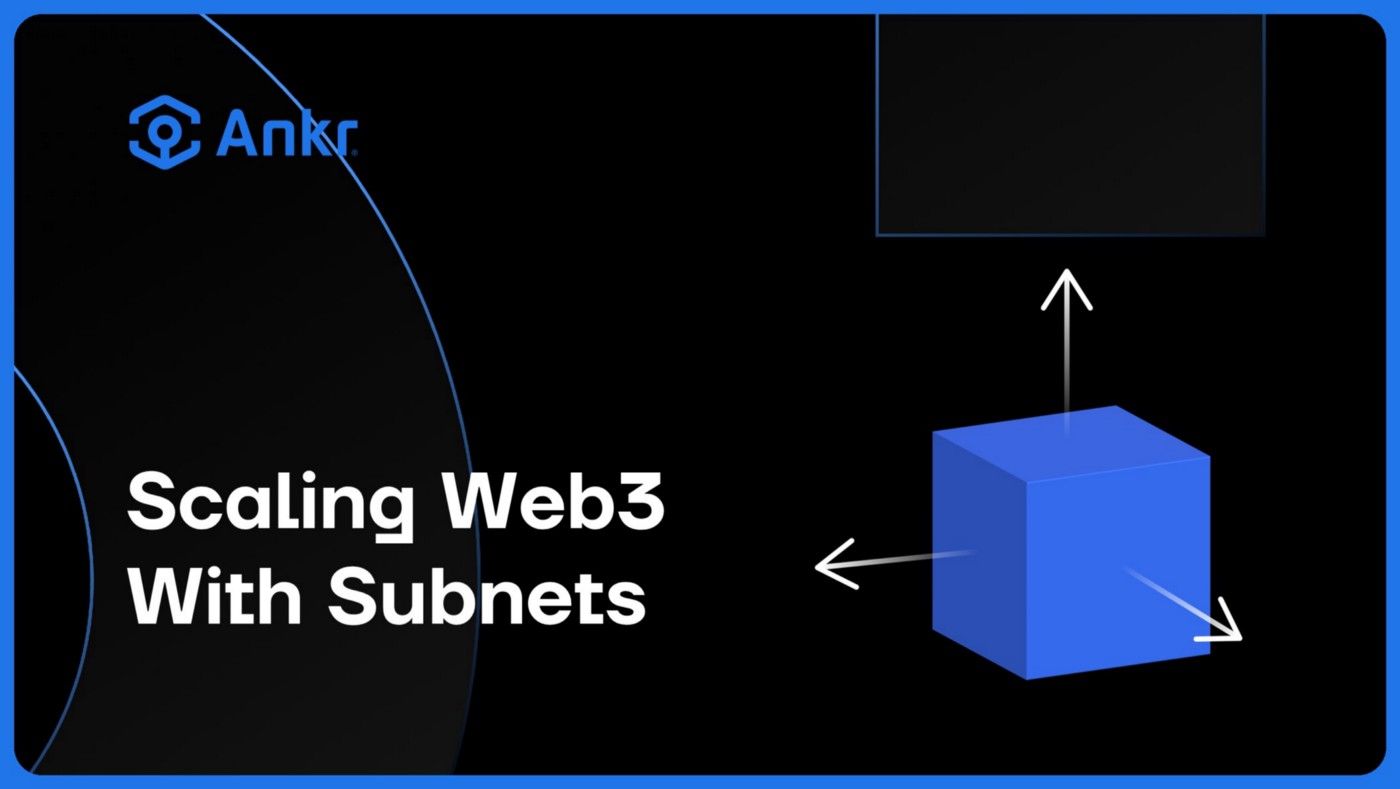Application-Specific Blockchains: More Flexibility & Scalability for Web3 Development
October 19, 2022
5 min read
Blockchains for Application: Greater Flexibility and Scalability for Web3 Development

Introduction
All inventive scaling methods have emerged in the continuous attempt to make blockchains sufficiently scalable for enterprise-level traffic. The most recent advancement in scalability is the use of application-specific blockchains, sometimes known as "subnets." In this post, we'll define subnets, discuss how they're presently utilized, how they make dApp development more flexible and scalable, and discuss Ankr's role in aiding their continuing growth and success. Let's get started!
What Are Application-Specific Blockchains, also known as Subnets?
Application-specific blockchains are precisely what their name implies: blockchain networks devoted to a single application. These application-specific blockchains function as child chains connected to a mainchain or parent chain. With this design, the application-specific blockchain may have its own consensus mechanism, process its transactions, and retain much of the security and provenance are given by its parent chain.
Under somewhat different titles, a few ecosystems are pioneering the concept of application-specific chains. Polygon is introducing "Supernets," Binance Chain is developing "BAS," and Avalanche just refers to them as "Subnets."
The Benefits of Subnets: Flexibility and Scalability
So, why would a developer construct their decentralized application (dApp) on an application-specific blockchain (or subnet) rather than on top of an existing blockchain like as Ethereum utilizing smart contracts? There are many causes for this.
For starters, smart contract development might be more rigorous than most developers want. Without going into too much depth, smart contract creation is dependent on certain programming languages and the limits of specific virtual machines such as the Ethereum Virtual Machine (EVM). Developers have far more freedom by creating on a subnet. They have the option of using several programming languages, consensus processes, and development frameworks. If a ready-made solution isn't appropriate, they may alter and adjust the components as needed. More security may be applied if necessary. They can employ proprietary cryptography if they wish to.
Second, subnets are meant to be more scalable, which means they can process more transactions faster and more cheaply than smart contracts on a Layer-1 blockchain. Because smart contracts on Layer-1 are all operated by the same virtual machine (e.g., EVM), they compete for resources. Consider a future in which hundreds or thousands of dApps are all depending on a single virtual machine and attempting to service their individual communities simultaneously – network congestion quickly accumulates.
When considering high-throughput use cases (such as decentralized gaming), which involve millions of concurrent users processing hundreds of millions of transactions (think avatars, items, NFTs, and other in-game transactions), the need for extreme scalability provided by subnets becomes abundantly clear. There is presently no blockchain capable of sustaining the network load of a massively popular Web2 video game. Not in their present form, at any rate.
Subnets in Action
Developers have maximal freedom and sovereignty with application-specific blockchains. They may choose which programming languages to employ, which framework to create their state machine with, and which consensus mechanism to utilize to manage their application-specific blockchain. Subnets are also a novel technique of scaling dApps to serve enterprise-level network traffic with optimum performance since dApps on application-specific blockchains no longer compete for common resources.
This technical advancement is based on the phrase "one chain, one game," yet its applications go well beyond decentralized gaming. Any dApp may benefit from existing on a blockchain that only runs one application. As a result, there is no rivalry for storage or computing, and scalability may flourish.
Although previously unnoticed, industry-leading networks, including Cosmos, Avalanche, and now Binance, have identified the intriguing potential for subnets to increase blockchain scalability and spur more Web3 development in general.
The Role of Ankr in the Development of Application-Specific Blockchains Ankr stated in March 2022 that it collaborated closely with Binance Smart Chain (BSC) to launch the first Binance Smart Chain Application Sidechain (BAS) testnet with Celer and NodeReal. The BAS testnet is a platform for developing application-specific blockchains tailored to dApps in the ecosystem of the BSC blockchain. Ankr is excited to continue supporting the Binance ecosystem as an infrastructure partner and to usher in the new age of scalable development using subnets.
With the adoption of BAS in 2022, dApps operating on BSC sidechains may anticipate very cheap or near-zero transaction fees, as well as better throughput and more development freedom. BAS, in particular, will enable far more data- and volume-intensive apps, like as Web3 games, to operate concurrently inside the Binance ecosystem without hitting scaling limits.
Developers may get started right away since Ankr has already created the first BAS testnet!
Subnets' Future, Scalability, and Ankr's Involvement
Though still a relatively new scaling option, subnets have the potential to significantly boost the throughput of specific dApps and the overall pace of Web3 development by providing developers with additional tools and freedom to do what they do best: create.
And, as one would expect, as the number of distinct blockchains devoted to particular dApps grows, so will the need for node infrastructure. A single dApp may need hundreds of servers, nodes, endpoints, validators, and other components to function as an application-specific blockchain. Therein lies the tradeoff and another potential for Ankr to meet market demand.
Ankr intends to provide more node infrastructure for application-specific blockchains in the future, as well as possibly expand its present validator node services into a validator-as-a-service offering to assist in the establishment of new subnets. Ankr is uniquely positioned to service the infrastructure demands that will undoubtedly develop with the spread of application-specific blockchains as the fastest growing — and more decentralized — Web3 infrastructure provider.



